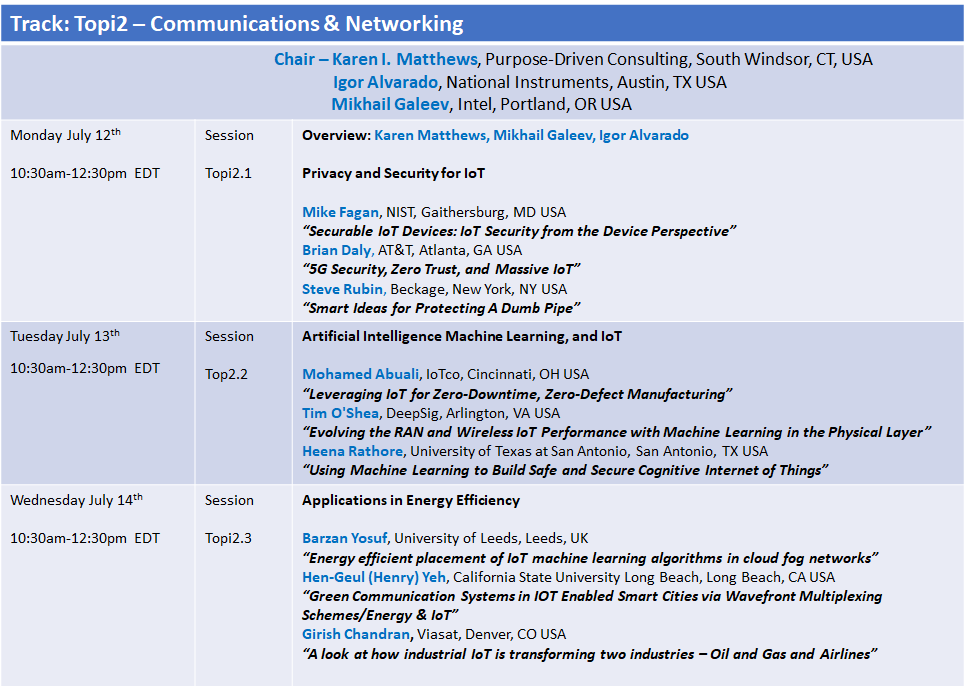
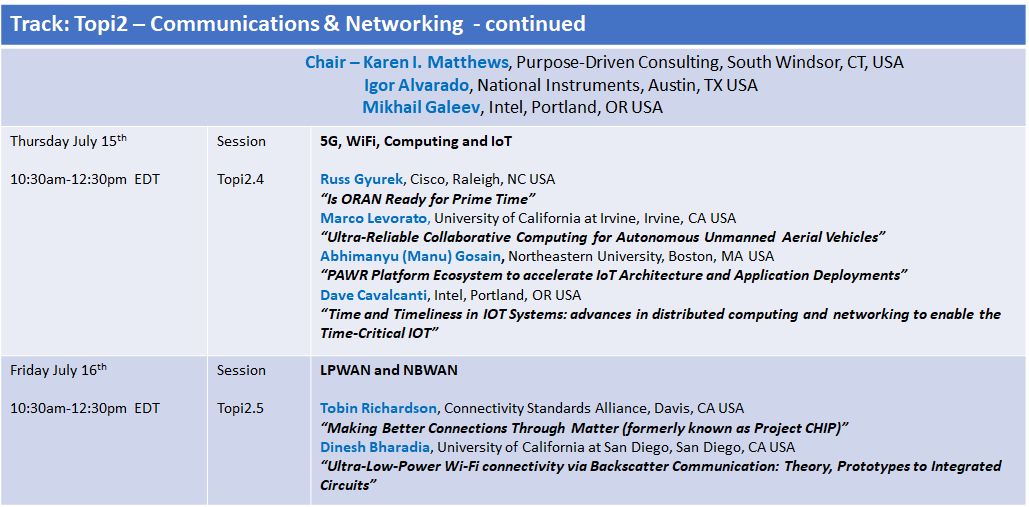
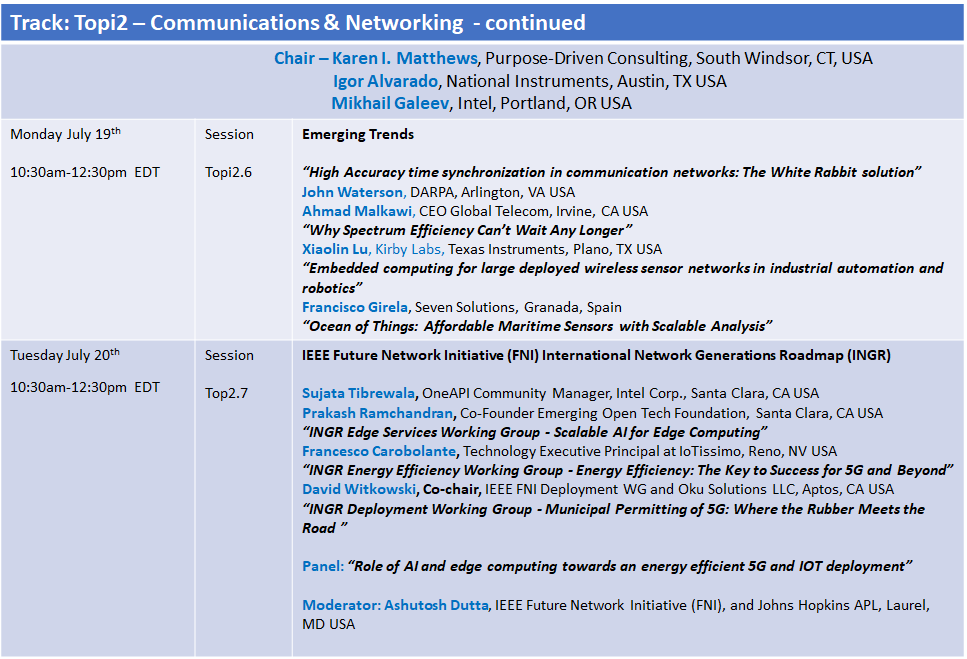
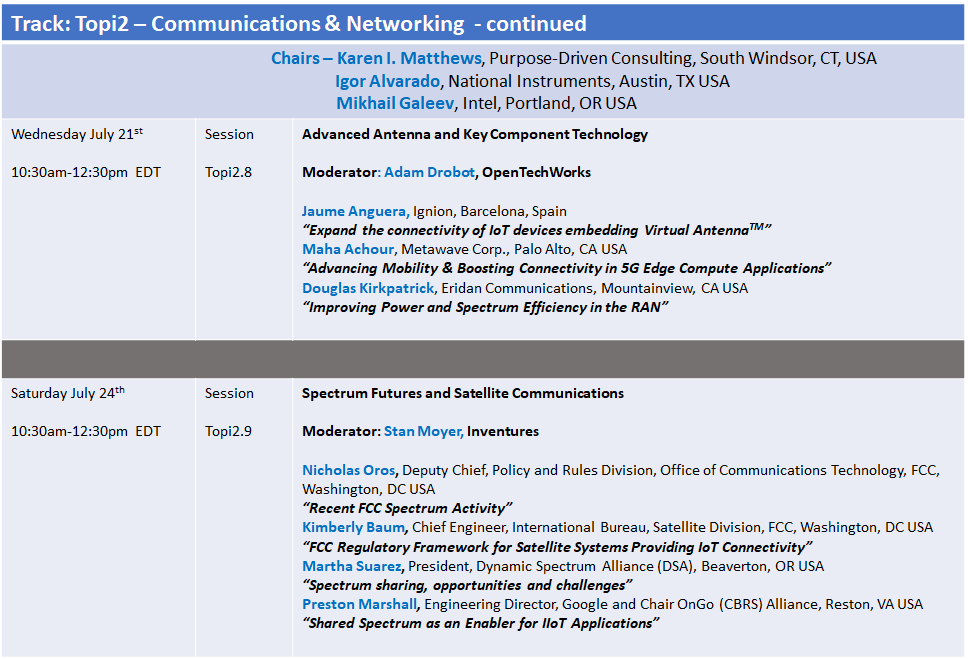
Description
The world is getting “smarter”. Though we are social distancing, we are growing more and more (digitally) connected. As we grow from smart, connected devices, to smart, connected building…to smart, connected enterprises (business, healthcare, etc.) …to smart, connected cities…to smart, connected (power) grids…and so on, we can begin to understand the impact of Internet of Things (IoT), including embedded computing, connectivity and networking on our daily lives. The truth of the matter is that we are surrounded by IoT every day. In our homes, on our jobs (which may be from our homes), on the manufacturing floor (a.k.a. Industrial IoT or IIoT), or in an enterprise, stadium, airport and (almost) any other public venue, we use these intelligent devices/mediums to produce, send, receive, analyze, and make decisions. IoT is everywhere. And while many like to look at the annual market reports, touting tens of billions of connected devices by 2023, the rest of us are looking at either how do we successfully implement IoT in our brownfield (where we want to retro-fit our current processes and equipment with some type of “IoT magic gadget” that will propel us forward to Industry 4.0), or how do we start in a greenfield? [1]
Whether you are collecting, processing, storing or analyzing data at the process-level, edge, on premise or in the public or private fog/cloud, your IoT implementation will rely on fast, efficient, secure and reliable connectivity and networking. It is imperative that we envelop new applications with such capabilities. Equally imperative is the need to ensure that the connectivity and network required for these applications are engineered and optimized for the purpose. This track will bring together global experts from industry, government and academia to discuss these topics in an effort to help move our world forward in its successful understanding and implementation of IoT. Through orchestration, IoTs can be easily integrated with existing business workflows and systems, perform distributed learning and unify data from different IoT devices and systems.
To discuss those and many other relevant topics, we bring together experts from a broad range of different environments and application settings to encompass different IoT verticals and topicals areas. Thus, topics this track will cover will include:
- Licensed and Unlicensed Spectrum: standards and regulations
- IoT role in5G and beyond: technology, public/private networks, applications, deployments
- IoT look at Wi-Fi6 & Wi-Fi7
- Bluetooth, 802.15.4/ZigBee, LoRA, NB-IoT, MQTT and other narrow-band protocols for LPWAN networks
- Connect & Compute in IoT, where it is: Edge-Fog-Cloud or all above?
- Heterogeneity in IoT: CPUs, GPUs, FPGAs and custom processors optimized for IoT applications
- Security, privacy and trust challenges in IoT
- Distributed timing and synchronization with TSN, IEE-1588, WR and other PTP protocols in IoT applications: leveraging ultra-low latency/high reliability networks
- AI-ML enabled IoTs, networking and communications, distributed and federated learning
- IoT network orchestration: challenges and opportunities
- Greening of IoT: energy efficiency and power consumption in IoT devices and networks
- Hot topics (panel discussions)
- 5G and Wi-Fi -friends or foes in the enterprises IoT
- Wireless all the way – future of wired & optical networks in IoT applications
- Rise of AI – Hard logic or AI for missing critical IoT applications
- Co-existence – the major trend in IoT (comm, application and deployment)
- Advances in antenna technology, signal processing, systems aspects of high bandwidth and high throughput communications for both terrestrial and space based networks
Track Co-Chairs
Karen Matthews, CEO, Purpose-Driven Consulting, South Windsor, CT USA
 Karen Matthews, a native of Baltimore, MD, began her academic career at the US Naval Academy, received a BS in Electrical Engineering from Morgan State University and a MEng and PhD in Electrical Engineering and an MBA, all from Cornell University.
Karen Matthews, a native of Baltimore, MD, began her academic career at the US Naval Academy, received a BS in Electrical Engineering from Morgan State University and a MEng and PhD in Electrical Engineering and an MBA, all from Cornell University.
Karen is the Founder and CEO of Purpose-Driven Consulting (PDC). Prior to PDC, she held senior positions in Corning Incorporated’s Science & Technology Division in opto-electronic packaging as a research and then senior research scientist, most recently working in early innovation stage markets and technologies for the optical communications sector to identify and help implement new growth opportunities in both wired (fiber, cable and connectivity) and wireless. Her focus on moving concepts through to commercialization remains, with a current emphasis on Digital Transformation, 5G, the Internet of Things and Industry 4.0 Innovation.
Dr. Matthews has authored numerous publications and patents and is a member of several technical and professional organizations. She has served as an Executive Board member of Georgia Tech’s Center for the Development and Application of Internet of Things Technologies (CDAIT) – sitting on the Research Work Group and leading the Thought Leadership Work Group therein. Most recently, she has been invited as keynote speaker, moderator, panelist and open forum discussion leader at various 5G, Internet of Things and smart manufacturing conferences. She has Chaired the OFC 2020 N5 Market Watch, developing the programming for Market Watch, Network Operators Summit and Data Center Summit, and continues as an active subcommittee member for 2021 as well as co-chair of the 2021 IEEE World Forum track on Communications and Networking. She is an Executive Board member of The Upskill Foundation, a non-profit focusing on upskilling underrepresented groups in data science.
Mikhail Galeev, Wireless Research Scientist at Intel Labs Portland, OR, USA
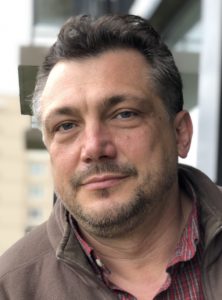 Mikhail Galeev received the M.S. degree in applied physics from Rostov State University, Rostov-on-Don, Russia, in 1994, the M.S.E.E. degree from the University of South Alabama, Mobile, AL, USA, in 1999, and the M.E.M. degree from Northwestern University, Evanston, IL, USA, in 2009. He was the Founder of Z-Focus Technology Group, Palatine, IL, USA, a company that developed software to enable BLE applications. He is currently a Senior Research Scientist with Intel Labs, Hillsboro, OR, USA. With a primary interest in research and implementation, he has authored multiple publications and patents related to applications of Wi-Fi, Bluetooth, ZigBee, Z-Wave, and other wireless sensor networks. His current research is focused in area of Wireless Time Sensitive Networks (WTSN) for a latency bounded, ultra-reliable communication in the next generation Wi-Fi.
Mikhail Galeev received the M.S. degree in applied physics from Rostov State University, Rostov-on-Don, Russia, in 1994, the M.S.E.E. degree from the University of South Alabama, Mobile, AL, USA, in 1999, and the M.E.M. degree from Northwestern University, Evanston, IL, USA, in 2009. He was the Founder of Z-Focus Technology Group, Palatine, IL, USA, a company that developed software to enable BLE applications. He is currently a Senior Research Scientist with Intel Labs, Hillsboro, OR, USA. With a primary interest in research and implementation, he has authored multiple publications and patents related to applications of Wi-Fi, Bluetooth, ZigBee, Z-Wave, and other wireless sensor networks. His current research is focused in area of Wireless Time Sensitive Networks (WTSN) for a latency bounded, ultra-reliable communication in the next generation Wi-Fi.
Igor Alvarado, Igor Alvarado, NI (National Instruments), Austin TX USA
 Igor Alvarado is an Account Manager for R&D and National Laboratories at National Instruments (www.ni.com) where he helps to develop collaborations and strategic partnerships with National Laboratories, not-for-profit R&D Centers and leading Research Universities in the U.S. in such areas as Cyber-Physical Systems, Smart Energy Systems, Medical Imaging/Devices and RF/Wireless Communications to improve engineering education, advance scientific research and accelerate innovation with support from NSF, DoD, DoE, NIH and other funding agencies. Mr. Alvarado holds A.S. and B.S. degrees in Mechanical Engineering from Kansas State University and has been with NI since 1999. He is an NSF Innovation-Corps mentor and has more than 30 years of practical experience in successfully developing and growing markets for high-technology products and services in the U.S. and Latin America. He has led the design, development and deployment of real-time, measurement and intelligent control systems that involve advanced numerical methods and algorithms using high-performance embedded computing platforms. He is an active member of the Institute of Electrical and Electronics Engineers (IEEE), the Society of Industrial and Applied Mathematics (SIAM), the International Society of Automation (ISA), the American Physical Society (APS), the American Society of Mechanical Engineering (ASME), the American Association for the Advancement of Science (AAAS) and the National Organization of Research Development Professionals (NORDP). Mr. Alvarado has published several technical papers and has taught courses to engineers and scientists on instrumentation, control and automation applications in industry and academia; he has also been an invited keynote speaker at leading at national/international meetings, and has served as a consultant and advisory board member for academic institutions, corporations and research laboratories. In 2017, Mr. Alvarado received the prestigious Electrical and Computer Engineering Department Heads Association’s (ECEDHA) Industry Award for his contributions to the ECE discipline and to engineering education.
Igor Alvarado is an Account Manager for R&D and National Laboratories at National Instruments (www.ni.com) where he helps to develop collaborations and strategic partnerships with National Laboratories, not-for-profit R&D Centers and leading Research Universities in the U.S. in such areas as Cyber-Physical Systems, Smart Energy Systems, Medical Imaging/Devices and RF/Wireless Communications to improve engineering education, advance scientific research and accelerate innovation with support from NSF, DoD, DoE, NIH and other funding agencies. Mr. Alvarado holds A.S. and B.S. degrees in Mechanical Engineering from Kansas State University and has been with NI since 1999. He is an NSF Innovation-Corps mentor and has more than 30 years of practical experience in successfully developing and growing markets for high-technology products and services in the U.S. and Latin America. He has led the design, development and deployment of real-time, measurement and intelligent control systems that involve advanced numerical methods and algorithms using high-performance embedded computing platforms. He is an active member of the Institute of Electrical and Electronics Engineers (IEEE), the Society of Industrial and Applied Mathematics (SIAM), the International Society of Automation (ISA), the American Physical Society (APS), the American Society of Mechanical Engineering (ASME), the American Association for the Advancement of Science (AAAS) and the National Organization of Research Development Professionals (NORDP). Mr. Alvarado has published several technical papers and has taught courses to engineers and scientists on instrumentation, control and automation applications in industry and academia; he has also been an invited keynote speaker at leading at national/international meetings, and has served as a consultant and advisory board member for academic institutions, corporations and research laboratories. In 2017, Mr. Alvarado received the prestigious Electrical and Computer Engineering Department Heads Association’s (ECEDHA) Industry Award for his contributions to the ECE discipline and to engineering education.
Speakers
Tim O’Shea, DeepSig Inc., USA
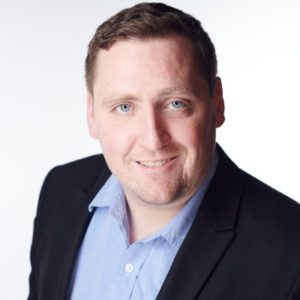 Tim is the Co-Founder/CTO of DeepSig, a venture backed startup in Arlington, VA which focuses on building production machine learning driven wireless software for wireless sensing and communications systems, with a focus on optimizing 5G vRAN and OpenRAN deployments and pioneering 6G RAN candidate technologies. He also serves as a research assistant professor at Virginia Tech. He previously worked as a DOD civilian focused on applied research in software and cognitive radio technologies and rapid prototyping, has helped build and lead the GNU Radio project, is the Co-Chair of the IEEE Emerging Technology Area on Machine Learning for Communications, has Chaired the GNU Radio Conference Technical Proceedings, MLC Workshops at IEEE Globecom and ICC, and is the Co-author of over 50 peer reviewed conference and journal papers and patents focusing on the intersection of wireless communications and machine learning. Previously he worked with Hawkeye 360, Federated Wireless, and Cisco Systems, has served as a technical advisory board member for programs at NSF, DARPA, EU HORIZON 2020, and other DOD programs. He completed his PhD from VT in 2017 and his BS/MS at NC State in 2007.
Tim is the Co-Founder/CTO of DeepSig, a venture backed startup in Arlington, VA which focuses on building production machine learning driven wireless software for wireless sensing and communications systems, with a focus on optimizing 5G vRAN and OpenRAN deployments and pioneering 6G RAN candidate technologies. He also serves as a research assistant professor at Virginia Tech. He previously worked as a DOD civilian focused on applied research in software and cognitive radio technologies and rapid prototyping, has helped build and lead the GNU Radio project, is the Co-Chair of the IEEE Emerging Technology Area on Machine Learning for Communications, has Chaired the GNU Radio Conference Technical Proceedings, MLC Workshops at IEEE Globecom and ICC, and is the Co-author of over 50 peer reviewed conference and journal papers and patents focusing on the intersection of wireless communications and machine learning. Previously he worked with Hawkeye 360, Federated Wireless, and Cisco Systems, has served as a technical advisory board member for programs at NSF, DARPA, EU HORIZON 2020, and other DOD programs. He completed his PhD from VT in 2017 and his BS/MS at NC State in 2007.
Title: Evolving the RAN and Wireless IoT Performance with Machine Learning in the Physical Layer
Abstract: Machine Learning (ML) in the Physical Layer has recently gained significant interest across wireless, wired, and optical communications systems for its potential to improve information capacity, performance, and quality of experience (QoE) while reducing computational complexity. We’ll provide an introduction to key concepts and techniques which have contributed to this trend and further highlight how these will evolve wireless beyond current standards and techniques. We’ll highlight the work we’ve been doing at DeepSig to help leverage ML in today’s 5G vRAN systems, to build out candidate systems for the beyond-5G learning based PHY, how we can leverage generative ML to capture precise models of propagation, distortion and interference environments, and how we can leverage ML based sensing techniques to precisely and rapidly identify and localize intended and unintended radio emitters and provide an accurate operating picture of the spectral environment and how to best operate in it. We’ll highlight recent work in the IoT space where we’ve shown these techniques scale well to spectrum mapping and optimization of IoT devices across a wide range of RAN technologies, and where both future spectrum sharing and usage optimization as well as wireless security rely heavily on having clear real-time operating pictures of the environment.
Steven S. Rubin, Technology IP team leader at Beckage
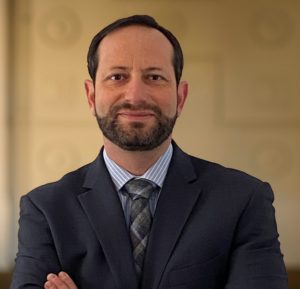 Steven S. Rubin, Esq., CIPP/US is the Technology IP team leader at Beckage, a 360-degree technology law firm with a recognized focus on data security and privacy compliance, incident response, and litigation. Steven has extensive experience working on technology matters, both as an IP attorney for more than 20 years and as an electrical engineer. This unique legal and technical background offers him a perspective on intellectual property that is invaluable to Beckage’s clients who are building and implementing new technologies, including IoT devices, 5G networks, and Artificial Intelligence. Steven is a sought-after speaker and writer on data privacy, security, and technology topics and has been quoted in The New York Times, Bloomberg BNA, Law.com, and Forbes.
Steven S. Rubin, Esq., CIPP/US is the Technology IP team leader at Beckage, a 360-degree technology law firm with a recognized focus on data security and privacy compliance, incident response, and litigation. Steven has extensive experience working on technology matters, both as an IP attorney for more than 20 years and as an electrical engineer. This unique legal and technical background offers him a perspective on intellectual property that is invaluable to Beckage’s clients who are building and implementing new technologies, including IoT devices, 5G networks, and Artificial Intelligence. Steven is a sought-after speaker and writer on data privacy, security, and technology topics and has been quoted in The New York Times, Bloomberg BNA, Law.com, and Forbes.
At Beckage, Steven counsels clients on patent, trademark, copyright, and trade secrets-related matters through the lens of technology, cybersecurity, and data privacy. He helps in the development and promotion of creative intellectual property portfolios that can turn a company’s ideas into a line on their balance sheet. Steven also assists in the enforcement of intellectual property portfolios, protecting his clients’ tangible and intangible access from unauthorized use.
In the IoT space, Steven focuses his practice on helping clients obtain utility and design patents for IoT devices. He also works to help clients in this space understand the cybersecurity and data privacy considerations associated with IoT devices. In conjunction with Beckage’s Compliance Team, Steve helps companies in the IoT space work towards compliance with state, federal, and international data security and privacy regimes including the California Consumer Privacy Act (CCPA) and the European Union’s Global Data Protection Regulation (GDPR).
Steven has been a member of the Institute of Electrical and Electronics Engineers (IEEE) for three decades. He is a former recipient of the IEEE Long Island Chapter Power & Energy Society Chapter Outstanding Engineer Award. He has also served on several IEEE Long Island Chapter societies and committees.
John W. Waterston, Program Manager, Strategic Technology Office, DARPA
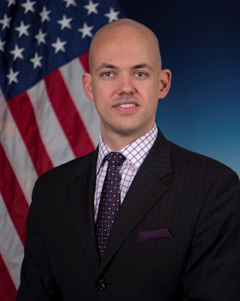 Mr. John Waterston joined DARPA in 2017 as a Program Manager in the Strategic Technology Office (STO). Mr. Waterston’s interests are in maritime autonomy, undersea warfare, and distributed sensing. He seeks disruptive concepts to transform the future defense enterprise.
Mr. John Waterston joined DARPA in 2017 as a Program Manager in the Strategic Technology Office (STO). Mr. Waterston’s interests are in maritime autonomy, undersea warfare, and distributed sensing. He seeks disruptive concepts to transform the future defense enterprise.
Mr. Waterston’s portfolio of projects. Ocean of Things seeks to enable persistent maritime situational awareness over large ocean areas by deploying thousands of small, low-cost floats that form a distributed sensor network.; Phorcys seeks to enable a new form of access for military operations through coordination of containerized military capabilities distributed across available commercial vessel; Spatial, Temporal, and Orientation Information in Contested Environments (STOIC) seeks to develop a backup PNT system that provides GPS-level and better performance without relying on GPS.
Prior to arriving at DARPA, Mr. Waterston was a Senior Program Manager within SRI International’s Advanced Technology and Systems Division. There he led defense research programs in various technical areas to include cyber warfare, arctic sensing, and unmanned vehicles. Outside of industry, Mr. Waterston serves in the U.S. Naval Reserves and was recently selected to the rank of Captain.
A native of Dallas, TX., Mr. Waterston graduated from the United States Naval Academy with a bachelor’s degree in Electrical Engineering and entered the Submarine Warfare Community upon commissioning. He graduated from Stanford University with a Master of Science in Electrical Engineering.
Title: Ocean of Things: Affordable Maritime Sensors with Scalable Analysis
Abstract: DARPA’s Ocean of Things program enables persistent maritime situational awareness over large ocean areas by deploying thousands of low-cost, intelligent floats that drift as a distributed sensor network. Each drifter manages a suite of commercially available sensors to collect environmental data such as ocean temperature, sea state, and location as well as activity data about commercial vessels, aircraft, and even maritime mammals moving across the ocean. The floats transmit processed data, when needed, via satellite to a cloud network for storage and real-time analysis. The technical challenge for Ocean of Things lies in two key areas: float development and data analytics. DARPA is developing an environmentally compliant drifter to house passive sensors that can survive in harsh maritime environments. Each float will monitor its surroundings for at least one year before safely scuttling to the ocean floor. The floats are made of biosafe materials, pose no danger to vessels, and comply with all federal laws, regulations, and executive orders related to protection of marine life. The data analytics portion of the Ocean of Things program has developed cloud-based software and analytic techniques to process reported data from floats. This software can dynamically display float locations, health, and mission performance; process of environmental data for oceanographic and meteorological models; automatically detect, track, and identify nearby vessels; and identify new indicators of maritime activity. Predictive modelling of surface currents and wind within the deployment region, informs initial deployment and periodic additions to ensure mission coverage. The OoT system provides a modern platform to serve spatial data to support “dynamic ocean management” which has the potential to provide more relevant and effective management by ocean information users. This paradigm-shift away from terrestrial-based management techniques (e.g., quota-based systems tied to stationary marine protected area (MPA) boundaries) has been proposed as a needed improvement in numerous marine sectors but has so far lacked in sufficient near real-time data accessible to users for response to changes in the ocean environment. With the addition of advanced data analytics, OoT will automate many processes that previously required human analysts. In summary, the Ocean of Things program goal is to increase maritime awareness in a cost-effective way. Using traditional platforms, it would be cost-prohibitive to continuously monitor vast regions of the ocean. By coupling powerful analytical tools with commercial sensor technology, the OoT program creates floating sensor networks that significantly expand maritime awareness at a fraction of the cost of current approaches.
Francisco Girela, Seven Solutions
 Francisco is the Americas Tech Responsible at Seven Solutions. He holds a Master’s degree in Telecommunications Engineering from the University of Granada. After some time in the private sector, Francisco joined the Timing Keepers group at the same university as a researcher. During his research, he specialized in ultra-accurate time transfer systems and he focused on the development of the White Rabbit technology.
Francisco is the Americas Tech Responsible at Seven Solutions. He holds a Master’s degree in Telecommunications Engineering from the University of Granada. After some time in the private sector, Francisco joined the Timing Keepers group at the same university as a researcher. During his research, he specialized in ultra-accurate time transfer systems and he focused on the development of the White Rabbit technology.
At the moment, he combines his work at Seven Solutions with his studies for a Ph.D. in Telecommunications Engineering. This combination has provided Francisco with a strong technical background on High Accuracy time synchronization and deep knowledge on timing applications in industrial sectors. Right now, his research focuses on high precision timestamping in synchronized networks and the adoption of White Rabbit and the IEEE1588 High Accuracy profile in industrial scenarios.
Title: High Accuracy time synchronization in communication networks: The White Rabbit solution
Abstract: Time has provided technology a common reference to define when something has happened, schedule tasks or synchronize actions. However, a time reference is not useful if it cannot be accessed periodically by those devices that require time-awareness. Time transfer is key to propagating a global reference and needs to fulfill the specific requirements for each application in terms of reliability, accuracy, simplicity and cost among others. Those requirements have led to an heterogeneous ecosystem of time transfer technologies. However, there are different applications where high accuracy time transfer and frequency distribution are key to a successful deployment. Especially applications requiring bounded latencies, high precision relative synchronization and timestamping or spectrum-sharing can benefit from the most accurate time references. In this context, 5G networks are a remarkable example of the need for relative synchronization in the range of tens of nanoseconds, frequency distribution for spectrum sharing and latency measurements for different applications. White Rabbit is an extension of IEEE-1588 synchronization protocol for high accuracy applications. Born at CERN, White Rabbit can distribute deterministic time and frequency achieving synchronization better than 1 nanosecond for distances larger than 100 Km and thousands of nodes. Time and frequency transfer, trigger control and distribution or precise timestamping are a few examples of applications where the White Rabbit protocol helps to overcome the existing limitations. In this talk, the principles of the technology and several applications including time synchronization in 5G networks, positioning for IoT and frequency distribution for spectrum sharing will be reviewed.
Ahmad Malkawi, Global Telecom
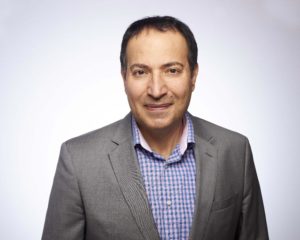 Ahmad Malkawi has 20+ years of experience in the wireless and telecommunications industry, working for industry-leading companies like AT&T, Qualcomm and Sprint. In 2018, he founded Global Telecom, which engineers modems, modules and AI solutions that enable a secure and reliable Internet of Things (IoT). It is currently the only U.S. manufacturer of IoT modules. Under his leadership, the company was named the “Emerging IoT Company of the Year” at the 8th Annual Compass Intelligence Tech Awards, and the “M2M Manufacturer of the Year” at the 4th Annual Mobile Breakthrough Awards.
Ahmad Malkawi has 20+ years of experience in the wireless and telecommunications industry, working for industry-leading companies like AT&T, Qualcomm and Sprint. In 2018, he founded Global Telecom, which engineers modems, modules and AI solutions that enable a secure and reliable Internet of Things (IoT). It is currently the only U.S. manufacturer of IoT modules. Under his leadership, the company was named the “Emerging IoT Company of the Year” at the 8th Annual Compass Intelligence Tech Awards, and the “M2M Manufacturer of the Year” at the 4th Annual Mobile Breakthrough Awards.
Malkawi holds two U.S. patents for driverless, host-less modules and combines them with select blockchain and emerging quantum cryptography techniques to provide some of the most secure products in the global marketplace for modules and devices. He has spoken at Mobile World Congress Los Angeles, written commentary for industry outlets such as IoT Evolution World and 5GRadar, appeared on podcasts like eeDesignIt and Marketscale’s In the Cloud, and written technical papers for the International Wireless Communication Expo (IWCE).
Title: Why Spectrum Efficiency Can’t Wait Any Longer
Abstract: The accelerated adoption of 5G and IoT due to the pandemic means a faster timeline for the exponential growth of devices in our homes, workplaces and cities. Projections need to be moved up for when the scarce resource of spectrum is going to become problematic, causing interference issues that can’t be easily addressed. There are no easy solutions on the horizon, but a fundamental restructuring of wireless networks with TDD running both send and receive protocols on the same channel could increase spectrum efficiency by as much as 68 percent. This enhanced efficiency – combined with a drastic reduction in energy usage and carbon footprint – can aid wireless networks in the United States with savings projected at nearly $200 billion per year (and likely in excess of one trillion dollars worldwide).
Abhimanyu (Manu) Gosain, Northeastern University
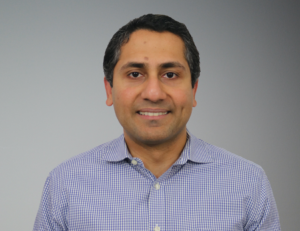 Abhimanyu (Manu) Gosain is a Senior Technical Program Director for PAWR and Director of Industry Engagement for Institute of Wireless Internet of Things at Northeastern University. In this role, he is in charge of setting strategic goals and the research agenda for a $100M public-private partnership for the NSF Platforms for Advanced Wireless Research (PAWR) program and $25M DARPA Colosseum program. He serves as a Board Member for the OpenAirInterface Software Alliance, Founding member for Magma Core Foundation, university representative for O-RAN Alliance, Telecom Infra Project and co-chair on organizing committee and program committees for 6GSymposium, EuCNC,IEEE InfoCom and ACM WinTech. His numerous professional publications and experience exemplify use-inspired basic research in the field of networking technologies such as LTE, 5G, AI/ML, edge computing and Internet of Things. He is an IEEE Senior Member. He received his M.S. degree from Tufts University and M.B.A. from Boston University with High Honors.
Abhimanyu (Manu) Gosain is a Senior Technical Program Director for PAWR and Director of Industry Engagement for Institute of Wireless Internet of Things at Northeastern University. In this role, he is in charge of setting strategic goals and the research agenda for a $100M public-private partnership for the NSF Platforms for Advanced Wireless Research (PAWR) program and $25M DARPA Colosseum program. He serves as a Board Member for the OpenAirInterface Software Alliance, Founding member for Magma Core Foundation, university representative for O-RAN Alliance, Telecom Infra Project and co-chair on organizing committee and program committees for 6GSymposium, EuCNC,IEEE InfoCom and ACM WinTech. His numerous professional publications and experience exemplify use-inspired basic research in the field of networking technologies such as LTE, 5G, AI/ML, edge computing and Internet of Things. He is an IEEE Senior Member. He received his M.S. degree from Tufts University and M.B.A. from Boston University with High Honors.
Title: PAWR Platform Ecosystem to accelerate IoT Architecture and Application Deployments
Marco Levorato, UCIrvine
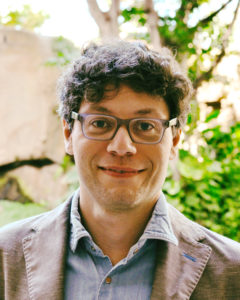 Marco Levorato joined the Computer Science department at UCIrvine in August 2013. He completed the PhD in Electrical Engineering at the University of Padova, Italy, in 2009. He obtained the B.S. and M.S. in Electrical Engineering summa cum laude at the University of Ferrara, Italy in 2005 and 2003, respectively. Between 2010 and 2012, He was a post-doctoral researcher with a joint affiliation at Stanford and the University of Southern California. His research interests are focused on distributed computing over unreliable wireless systems, especially for autonomous vehicles. His work received the best paper award at IEEE GLOBECOM (2012). In 2016 and 2019, he received the UC Hellman Foundation Award and the Dean mid-career research award, respectively.
Marco Levorato joined the Computer Science department at UCIrvine in August 2013. He completed the PhD in Electrical Engineering at the University of Padova, Italy, in 2009. He obtained the B.S. and M.S. in Electrical Engineering summa cum laude at the University of Ferrara, Italy in 2005 and 2003, respectively. Between 2010 and 2012, He was a post-doctoral researcher with a joint affiliation at Stanford and the University of Southern California. His research interests are focused on distributed computing over unreliable wireless systems, especially for autonomous vehicles. His work received the best paper award at IEEE GLOBECOM (2012). In 2016 and 2019, he received the UC Hellman Foundation Award and the Dean mid-career research award, respectively.
Title: Ultra-Reliable Collaborative Computing for Autonomous Unmanned Aerial Vehicles
Abstract: The autonomous operations of Unmanned Aerial Vehicles (UAV) require the execution of continuous streams of heavy-duty mission-critical computing tasks. These tasks often take the form of complex Deep Neural Network (DNN) models applied to information-rich signals such as image and lidar data. Clearly, such strenuous effort may exceed the capabilities and resources (e.g., computing power and energy) of most UAVs. The research community mostly relied on two distinct approaches to address this issue: model simplification and edge computing. The former may lead to performance degradation, while the performance of the latter suffer from the erratic behavior of wireless channels. In this talk, I will present two key components of reliable computing in the edge computing for Mobile Autonomous Systems (MAS) and especially UAVs. Our ultimate objective is to achieve task-level latency and accuracy guarantees. First, I will introduce the notion of data-driven redundant computing. The core idea is to replicate tasks across the system to reduce uncertainty in their total execution time. A Deep Reinforcement Learning (DRL) Agent dynamically controls in real-time how many and which edge servers are selected for computing. Our approach is experimental, and we demonstrate how the DRL agent necessitates features from multiple system blocks (telemetry, network and application) to make effective decisions in real-world deployments. Finally, I will summarize our work in the area of split computing, where we modify DNN models for vision to make them splittable across MAS and edge servers and reduce end-to end latency in unreliable wireless environments. We pioneered this area by introducing the notion of artificial bottleneck to obtain in-model compression, and by developing innovative training strategies that achieve the best rate distortion curve available to date.
Heena Rathore, University of Texas San Antonio
 Dr. Heena Rathore is an Assistant Professor at the University of Texas, San Antonio, USA. Prior to that, she was a visiting assistant professor at Texas A&M University, USA. She also worked as a Data Scientist and Program Manager at Hiller Measurements for a couple of years. Prior to that, she worked as a postdoctoral researcher for the US-Qatar Joint Collaborative Project between Temple University, USA, University of Idaho, USA, and Qatar University. Also, she was a visiting scholar for Wichita State University. She received her Ph.D. (with distinction) in Computer Science and Engineering Department while she was a Tata Consultancy Services Research Scholar at the Indian Institute of Technology, India. She has been the winner of several prestigious awards including Educationist Empowering India, IEEE R5 Outstanding Individual Achievement Award, IEEE Achievements Award, IIT REYA Award, Young Engineer Award, Global Engineering Impact Award, and Graphical System Design Achievement Award. She has published more than 40 papers in peer-reviewed journals and conferences in her field and is the sole author of Mapping Biological Systems to Network Systems (Springer). She was also featured on TedX, Qatar held by TedXAlDafnaEd in Qatar and her work is covered in professional and major trade publications, major media, such as IEEE.TV, Microwave Journal, Everything RF, Financial Express, Science Reporter, the Times of India, and India Today. She is an ACM distinguished speaker, IEEE senior member, Vice-Chair of IEEE EMBS chapter in San Antonio, and IEEE Central Texas Section in Austin. Her research interests include cognitive AI, cybersecurity, cyber physical systems, deep learning, machine learning, security, cryptocurrency, distributed systems, and biologically inspired systems.
Dr. Heena Rathore is an Assistant Professor at the University of Texas, San Antonio, USA. Prior to that, she was a visiting assistant professor at Texas A&M University, USA. She also worked as a Data Scientist and Program Manager at Hiller Measurements for a couple of years. Prior to that, she worked as a postdoctoral researcher for the US-Qatar Joint Collaborative Project between Temple University, USA, University of Idaho, USA, and Qatar University. Also, she was a visiting scholar for Wichita State University. She received her Ph.D. (with distinction) in Computer Science and Engineering Department while she was a Tata Consultancy Services Research Scholar at the Indian Institute of Technology, India. She has been the winner of several prestigious awards including Educationist Empowering India, IEEE R5 Outstanding Individual Achievement Award, IEEE Achievements Award, IIT REYA Award, Young Engineer Award, Global Engineering Impact Award, and Graphical System Design Achievement Award. She has published more than 40 papers in peer-reviewed journals and conferences in her field and is the sole author of Mapping Biological Systems to Network Systems (Springer). She was also featured on TedX, Qatar held by TedXAlDafnaEd in Qatar and her work is covered in professional and major trade publications, major media, such as IEEE.TV, Microwave Journal, Everything RF, Financial Express, Science Reporter, the Times of India, and India Today. She is an ACM distinguished speaker, IEEE senior member, Vice-Chair of IEEE EMBS chapter in San Antonio, and IEEE Central Texas Section in Austin. Her research interests include cognitive AI, cybersecurity, cyber physical systems, deep learning, machine learning, security, cryptocurrency, distributed systems, and biologically inspired systems.
Title: Using Machine Learning to Build Safe and Secure Cognitive Internet of Things
Abstract: Internet of Things devices, fueled by advancements in Artificial Intelligence (AI) and 5G, use sensors, processors, and communication devices to monitor and adapt to their operating environment. While experts opine that the IoT market is poised to grow at fast rates, there is a general agreement that such devices are prone to attacks, thereby impacting the safety and security of its operation. State of the art techniques have limited problem solving and resiliency skills as they are based on either exploiting the environment using historical data or by exploring the system for new observations. Due to this, they have limited cognitive capabilities of analysis, evaluation, and creation. Finally, current research focuses mostly on theory with limited emphasis on the methodology and implementation. This talk will discuss how we aim to address such challenges by adding increased levels of autonomy to IoT. This talk will cover novel strategies and methodologies to add increased cognitive capabilities to such systems, thereby making the system resilient against changes in the environment. The talk describes how one can build embedded AI agents (autonomous entities which sense, decide, and act upon an environment) using continuous data monitoring and adaptive response techniques. Since IoT represents an inherently interdisciplinary domain, this talk takes a holistic approach by developing a novel strategy and methodology to add increased cognitive capabilities to IoT. Such a cognitive IoT network has the capability to learn from a collaborative network of humans and machines, thereby making it safe and secure against disruptions in the environment.
Hen-Geul Yeh, California State University, Long Beach (CSULB), USA
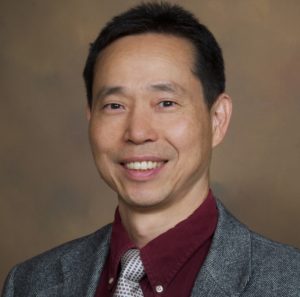 Hen-Geul Yeh (SM’82) received the B.S. degree in engineering science from National Chen Kung University, Taiwan, ROC, in 1978, and the M.S. degree in mechanical engineering and the Ph.D. degree in electrical engineering from the University of California, Irvine, in 1979 and 1982, respectively.
Hen-Geul Yeh (SM’82) received the B.S. degree in engineering science from National Chen Kung University, Taiwan, ROC, in 1978, and the M.S. degree in mechanical engineering and the Ph.D. degree in electrical engineering from the University of California, Irvine, in 1979 and 1982, respectively.
Since 1983, he has been with the Electrical Engineering department at California State University, Long Beach (CSULB), USA, and served as the department Chair since 2016. His research interests include DSP/Communication/Control/Smart Systems algorithms development and implementation with applications to communication, smart grids, optimization, controls, and electrical event detection with more than 120 research papers in these areas.
Dr. Yeh is the recipient of IEEE R6 Outstanding Engineering Educator Award for outstanding contribution to the education of electrical engineers in the areas of DSP, Green Energy, and smart systems in 2019, Outstanding Professor Award, CSULB, 2015, five NASA Tech. Brief and New Technology awards from the National Aeronautics and Space Administration (NASA) from 1987 to 1996, and the Northrop Grumman Excellence in Teaching award, CSULB, 2007. Since 2010, he has served as the organizer and Conference Chair of IEEE Green Energy and Smart Systems Conference (IGESSC).
Title: “Green Communication Systems in IOT-Enabled Smart Cities via Wavefront Multiplexing Schemes”
Abstract: “Many cities are adopting to new technology and advanced communication networks to update and improve infrastructure, such as public utilities, transportation, and other services. A green communication scheme using an orthogonal wavefront (WF) multiplexing scheme spatially combined with orthogonal frequency-division Multiple Access (OFDMA) techniques forms a spatial WF OFDMA transceiver. This WF OFDMA transceiver is proposed for smart city applications, including both fixed and mobile internet of things (IOT). The WF multiplexing technique serves as the preprocessing and postprocessing method of the transceiver. With coordinated multiple point forward transmission, this system establishes a communication network which can be applied to multiple access points (APs) with down links to a single mobile unit (MU) or multiple MUs either in mobile or stationary environment. These MUs can be IOT based mobile shopping systems, smart mobile services, mobile traffic controls, etc. Although signals received are non-coherently due to different distances between APs and MUs in a city, they can be compensated and coherently combined via adaptive equalizers at MUs periodically in mobile environment. This is achieved by using pilot signals with an optimization method at the MU. Moreover, the required effective equivalent isotropically radiated power (EIRP) from APs to the MUs is significantly reduced due to multiple non-coherent transmission. Accordingly, the interference to adjacent frequency bands’ signals will be low. This green communication network can also be applied to the MUs staying in a stationary environment with initial setting only on fixed equalizers at MUs.”
Dinesh Bharadia, UC San Diego, USA
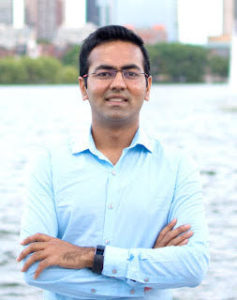 Dinesh Bharadia is Assistant Professor at UC San Diego, where he leads the wireless communication sensing and networking group (WCSNG). His research interests include advancing the theory and design of modern wireless communication and sensing systems, and low-power networks. In recognition of his research, he was named a Marconi Young Scholar for outstanding wireless research and awarded the Michael Dukkakis Leadership award. He was also named as one of the top 35 Innovators under 35 in the world by MIT Technology Review in 2016 and worldwide Forbes 30 under and 30 for Science category in 2018.
Dinesh Bharadia is Assistant Professor at UC San Diego, where he leads the wireless communication sensing and networking group (WCSNG). His research interests include advancing the theory and design of modern wireless communication and sensing systems, and low-power networks. In recognition of his research, he was named a Marconi Young Scholar for outstanding wireless research and awarded the Michael Dukkakis Leadership award. He was also named as one of the top 35 Innovators under 35 in the world by MIT Technology Review in 2016 and worldwide Forbes 30 under and 30 for Science category in 2018.
He received his Ph.D. in the Electrical Engineering Department at Stanford University. His Ph.D. thesis invalidated a long-held assumption in wireless communication by building full-duplex radios. From 2013 to 2015, he was a Principal Scientist for Kumu Networks, where he worked to commercialize his research on full-duplex radios, building a product which underwent successful field trials at Tier 1 network providers worldwide like Deutsche Telekom and SK Telecom. He received his bachelor’s degree in Electrical Engineering from the Indian Institute of Technology, Kanpur in 2010. He is a recipient of the Stanford Graduate Fellowship, as well as a gold medal at IIT Kanpur for graduating at the top of his class. His research has been published at top conferences like SIGCOMM, NSDI, MobiCom, etc and has been cited over 6500 times.
Title: Ultra-Low-Power Wi-Fi connectivity via Backscatter Communication: Theory, Prototypes to Integrated Circuits
Abstract: Internet-of-Things (IoT) devices serve as gateways that connect the physical world to the digital world. As such we have powerful AI tools to process data in the digital world, However, IoT devices are currently insufficient for capturing and processing large amounts of physical world data due to constrained batteries. In this talk, I will present theory, prototypes and integrated circuits developed to enable IoT devices to off-load Mbps of data directly to the existing WiFi ecosystem while requiring 5000x lower power compared to current WiFi transceivers. Our system achieves this by reflecting existing ambient WiFi traffic in the air while embedding data, such that reflected signal is still standard WiFi signal. Furthermore, the embedded data can be easily decoded by existing WiFi infrastructure, allowing IoT’s to achieve Mbps of connectivity at a fraction of energy consumed. I will present theory, design, prototypes and finally integrated circuits, which enables 28 uW peak power consumption, providing 10’s of meters of range with 2 Mbps of data-rate.
Xiaolin Lu, Director of Texas Instruments Kilby Labs, USA
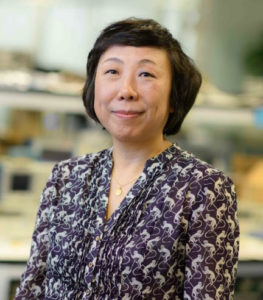 Xiaolin is Fellow and director of Texas Instruments Kilby Labs responsible for research activities on connected sensors, embedded artificial intelligence (AI), timing and clocking technologies for industrial and automobile applications. She is chartered to drive various differentiated semiconductor solutions into mass market applications through ubiquitous TI sensors and sensing technologies, digital and analog sensing interfaces, embedded AI for embedded processors, robust/low power connectivity and power management. Xiaolin is well-known as an embedded system expert inside and outside TI and has given keynote and plenary talks at numerous technical conferences. In addition, she is the author/co-author of more than 60 U.S. issued patents and the recipient of the special recognition awards: 2016 Asian American Engineer of the Year, Society of Women Engineers (SWE) and National Women of Color award in the Technical Innovation – Industry category.
Xiaolin is Fellow and director of Texas Instruments Kilby Labs responsible for research activities on connected sensors, embedded artificial intelligence (AI), timing and clocking technologies for industrial and automobile applications. She is chartered to drive various differentiated semiconductor solutions into mass market applications through ubiquitous TI sensors and sensing technologies, digital and analog sensing interfaces, embedded AI for embedded processors, robust/low power connectivity and power management. Xiaolin is well-known as an embedded system expert inside and outside TI and has given keynote and plenary talks at numerous technical conferences. In addition, she is the author/co-author of more than 60 U.S. issued patents and the recipient of the special recognition awards: 2016 Asian American Engineer of the Year, Society of Women Engineers (SWE) and National Women of Color award in the Technical Innovation – Industry category.
Title: Embedded computing for large deployed wireless sensor networks in industrial automation and robotics
Abstract: In this talk we will discuss embedded computing for smart sensors in a large sensor network environment. The definition, platform, network and underneath semiconductor technologies to make industrial automation/robotics work more efficiently will be addressed. Examples of use cases that will be discussed are an example factory robotic arms-based process flow, its initial results and opportunities for future optimizations. The performance measured by energy efficiency, connectivity robustness, optimization of network traffic and accuracy of event capturing in an extremely integrated sensor node platform will be described. Use cases covered in this talk can be easily extended to other smart factory, smart buildings, smart cities and smart transportation systems.
Dave Cavalcanti, Intel
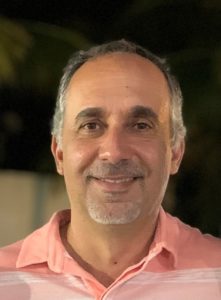 Dave Cavalcanti is currently Principal Engineer at Intel Corporation where he develops next generation wireless connectivity and distributed computing technologies to enable autonomous, time-sensitive systems, and IOT applications. He received his PhD in computer science and engineering in 2006 from the University of Cincinnati. He leads Intel Lab’s research on Wireless Time-Sensitive Networking (TSN) and industry activities to enable determinism in future wireless technologies, including Wi-Fi and beyond 5G systems. He is Senior Member of the IEEE and serves as the chair of the Wireless TSN working group in the Avnu Alliance, an industry group facilitating an ecosystem of interoperable TSN devices and deterministic networking across Ethernet, Wi-Fi and 5G technologies.
Dave Cavalcanti is currently Principal Engineer at Intel Corporation where he develops next generation wireless connectivity and distributed computing technologies to enable autonomous, time-sensitive systems, and IOT applications. He received his PhD in computer science and engineering in 2006 from the University of Cincinnati. He leads Intel Lab’s research on Wireless Time-Sensitive Networking (TSN) and industry activities to enable determinism in future wireless technologies, including Wi-Fi and beyond 5G systems. He is Senior Member of the IEEE and serves as the chair of the Wireless TSN working group in the Avnu Alliance, an industry group facilitating an ecosystem of interoperable TSN devices and deterministic networking across Ethernet, Wi-Fi and 5G technologies.
Title: Time and Timeliness in IOT Systems: advances in distributed computing and networking to enable the Time-Critical IOT
Abstract: This talk will discuss the recent developments on distributed Edge computing and networking technologies to enable precise time and timeliness for emerging time-critical applications. As IOT systems evolve, more and more applications will require synchronous and real-time computing across distributed edge systems. Future autonomous mobile robots, smart manufacturing, autonomous vehicles, AR/VR experiences will leverage virtualized computing across wireless and wired networks with deterministic low latency and high reliability. This talk will provide an overview of the research initiatives and industry ecosystem developing around edge computing and networking technologies to enable future time-critical applications and experiences. The presentation will cover new IOT use cases and requirements, time-coordinated computing, TSN (Time-sensitive networking) technologies in wired (Ethernet) and wireless systems (Wi-Fi6/6E and 5G). It will also discuss new paradigms for co-designing computing and communications and the evolution of wireless standards to support time-critical communications in Wi-Fi 7 and 6G.
Tobin Richardson, President and CEO, Connectivity Standards Alliance
 As the President and CEO of the Connectivity Standards Alliance (formerly Zigbee Alliance), Tobin Richardson is on a mission to simplify and harmonize the Internet of Things (IoT) through open, global standards and by creating a place where the world’s leaders and innovators across the IoT value chain can work together to create a more connected, accessible, sustainable, and equitable world.
As the President and CEO of the Connectivity Standards Alliance (formerly Zigbee Alliance), Tobin Richardson is on a mission to simplify and harmonize the Internet of Things (IoT) through open, global standards and by creating a place where the world’s leaders and innovators across the IoT value chain can work together to create a more connected, accessible, sustainable, and equitable world.
From facilitating international trade and commerce relationships to driving large scale digital and business transformation, Tobin’s career is rooted in driving human-centric change and enabling purposeful collaboration. Bringing together his early days as an advisor and consultant with his work in public policy, Tobin was drawn into the IoT in 2008, when he helped establish Zigbee Smart Energy as the open connectivity standard for the utility industry.
Since 2014, Tobin has led the Alliance, which now includes over 350 member companies in 37 countries across the IoT value chain. The Alliance is both a member-driven standards development group, known for technologies like Zigbee, and an industry association – guiding the industry forward, driving growth for members, delivering value to customers and consumers and creating standards that matter.
Under Tobin’s leadership, the Alliance launched a first-of effort between the largest IoT ecosystem players (Amazon, Apple, Google, Comcast & Samsung SmartThings) to create an IP-based standard intended to knock down the “walled gardens” of the IoT. Matter (formerly Project CHIP) – the interoperable, secure connectivity standard for the future of the smart home – now has more than 180 member company contributors.
In addition to evolving the Alliance into a multi-standards organization that is setting the foundation and future of IoT, Tobin also sits on the World Economic Forum’s Council on the Connected World, as Chair of the WEF’s initiative focused on strengthening collaboration across enterprise, regulators, consumers, and NGOs.
Prior to leading the Alliance, Tobin led large-scale tech transformations and new service/product rollouts across Fortune 500 companies, world-leading technology firms and public sector organizations. He holds a master’s degree from Georgetown University, and a bachelor’s degree from the University of California, Davis. He and his wife live in Davis, California, where they enjoy the outdoors, riding horses and tending their ranch.
Title: Making Better Connections Through Matter (formerly known as Project CHIP)
Abstract: As people spend more time at home, conduct business remotely, and eventually move back into office settings, better connectivity and digital exchanges across workstyles, lifestyles and commercial backdrops is a necessity. The IoT must be more intuitive, reliable and deliver a ‘just works’ experience between humans and smart devices/ecosystems.
Fortunately, change is well-underway fueled by the coming together of tech giants and IoT innovators that are cooperating across competitive lines to create a unifying standard for smart landscapes.
Matter is one of today’s most talked about tech initiatives, aiming to solve not-so-smart pain points felt during the IoT’s early years. Announced as Project ‘CHIP’ by Amazon, Apple, Google and Zigbee Alliance stakeholders, and recently rebranded as Matter, the initiative is charged with creating a single, open IP-based standard for the smart home/commercial settings to solve IoT interoperability issues and unpack the value of connected things. A comprehensive, resilient security approach is being applied to the standard, and for product manufacturers the time to get involved is NOW. Testing is underway and certification starts in late 2021.
Connectivity Standards Alliance (formerly known as the Zigbee Alliance**) CEO Tobin Richardson can share with IEEE World Forum on IoT attendees a behind-the-scenes look at this extraordinary effort that to date has attracted 170+ companies (collectively contributing 1,600+ experts) to overhaul the world’s IoT plumbing to take a range of categories – connected living, digital health, building automation, smart work/home/city, etc. – to new levels of global connectivity and guide us all into a more intelligent future.
Barzan A. Yosuf, Leeds
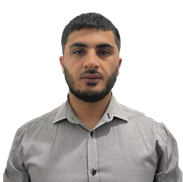 Barzan A. Yosuf received the BEng (Hons) degree in computer systems engineering, in 2012 and the MSc degree in embedded systems engineering in 2013, from the University of Huddersfield, Huddersfield, UK, and the Ph.D. degree with the School of Electronic and Electrical Engineering, in energy efficient distributed processing for IoT from the University of Leeds, UK, in 2019. His current research interests include IoT, fog and cloud computing energy optimization. He is currently a research fellow in network architecture and is a member of the IEEE Energy Efficient ICT working group, which focuses on developing improved energy efficient standards in areas such as big data processing over core networks, network virtualization and VM placement in the presence of access fog and core clouds.
Barzan A. Yosuf received the BEng (Hons) degree in computer systems engineering, in 2012 and the MSc degree in embedded systems engineering in 2013, from the University of Huddersfield, Huddersfield, UK, and the Ph.D. degree with the School of Electronic and Electrical Engineering, in energy efficient distributed processing for IoT from the University of Leeds, UK, in 2019. His current research interests include IoT, fog and cloud computing energy optimization. He is currently a research fellow in network architecture and is a member of the IEEE Energy Efficient ICT working group, which focuses on developing improved energy efficient standards in areas such as big data processing over core networks, network virtualization and VM placement in the presence of access fog and core clouds.
Title: Energy efficient placement of IoT machine learning algorithms in cloud fog networks
Abstract: Massive amounts of data are expected to be generated by the billions of objects that form the Internet of things (IoT). A variety of automated services will largely depend on the use of different machine learning algorithms. Using centralized cloud computing data centers for processing these machine learning algorithms, massive amounts of data will need to be offloaded from the end-device to the cloud data centres. This approach will inevitably lead to excessive networking power consumptions as well as Quality-of-Service (QoS) degradation such as increased latency. Instead, with a cloud/fog computing approach, processing can be also carried in different platforms in the access network which is closer to the end-device, but with limited capacities when compared to cloud data centres. This hybrid computing mode can reduce excessive networking power consumption as well as reducing latency. In this talk, using Mixed Integer Linear Programming (MILP) models of the hybrid computing mode, we present a solution to the computing and networking resource allocation problem to reduce the energy consumption by optimally placing machine learning algorithms in the end-device–cloud continuum.
Girish Chandran, Vice President and Chief Technical Officer at Viasat, Inc.
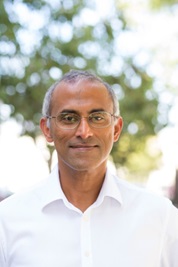 Girish Chandran serves as Vice President and Chief Technical Officer at Viasat, Inc. In this role he oversees the evolution of Viasat’s global network, which is responsible for connecting millions of personal and mobile devices per year—on the ground, in the air, and at sea.
Girish Chandran serves as Vice President and Chief Technical Officer at Viasat, Inc. In this role he oversees the evolution of Viasat’s global network, which is responsible for connecting millions of personal and mobile devices per year—on the ground, in the air, and at sea.
He has extensive experience in building products and networks in multiple continents and leading change in engineering organizations. Girish and his team focus on how next-generation communications infrastructure, especially software-based technologies will continue to be an integral part of the digital ecosystem connecting people, places and things.
Girish has held a number of engineering roles at Viasat since joining the Company in October 2007, from Principal Engineer and Chief Technology Officer—Commercial Networks to his current position, which he assumed in May 2017.
Prior to joining Viasat, Girish held several senior level engineering roles at various companies including Vice President of Engineering at Newtec America Inc., a satellite communications equipment provider, and Vice President of Systems Engineering at Tiernan Communications Inc. (acquired by Radyne Comstream Inc.), a provider of video compression and transmission solutions.
Girish earned a Ph.D. degree in Electrical Engineering from the University of California, San Diego, a M.S. degree in Electrical Communication Engineering from the Indian Institute of Science.
Title: A look at how industrial IoT is transforming two industries – Oil and Gas and Airlines
Abstract: IoT is transforming how industries are operating day-to-day especially in the context of pressure to drive better efficiencies in financial performance. We will examine real world examples of how two industries which are undergoing transformation through the uses of IoT, stream processing of sensor data and analytics are using it to drive better operational benefits.
IoT applications in oil and gas industry range from upstream asset tracking and well head monitoring to midstream pipeline monitoring to downstream refinery monitoring. Airline application of IoT to ranges from improving operating efficiencies by figuring out flight paths based on sensor data and local weather to reducing delays to tracking baggage. Improved passenger experience and personalization, safety, maintenance, efficiency and security are various categories of use cases where IoT is used in the airline industry.
Mike Fagan, National Institute of Standards and Technology
 Michael Fagan is a Computer Scientist and Technical Lead with the Cybersecurity for IoT Program which aims to develop guidance towards improving the cybersecurity of IoT devices and systems. The program works within the National Institute of Standards and Technology’s Information Technology Laboratory (ITL). Michael leads the development several guidance efforts related to IoT cybersecurity, including NISTIR 8259: Foundational Cybersecurity Activities for IoT Device Manufacturers, NISTIR 8259A: IoT Device Cybersecurity Capability Core Baseline, and recent drafts published by the Cybersecurity for IoT Program. Michael holds a Ph.D. in Computer Science & Engineering and has research background in the area of usable cybersecurity.
Michael Fagan is a Computer Scientist and Technical Lead with the Cybersecurity for IoT Program which aims to develop guidance towards improving the cybersecurity of IoT devices and systems. The program works within the National Institute of Standards and Technology’s Information Technology Laboratory (ITL). Michael leads the development several guidance efforts related to IoT cybersecurity, including NISTIR 8259: Foundational Cybersecurity Activities for IoT Device Manufacturers, NISTIR 8259A: IoT Device Cybersecurity Capability Core Baseline, and recent drafts published by the Cybersecurity for IoT Program. Michael holds a Ph.D. in Computer Science & Engineering and has research background in the area of usable cybersecurity.
Title: Securable IoT Devices: IoT Security from the Device Perspective
Abstract: Cybersecurity requires a system view to understand risks and appropriate mitigations. It is critical that cybersecurity is considered across the entire system to ensure adequate assessment and mitigation of risks, but cybersecurity of the system requires support from end devices that work in concert to support customer needs and goals. A securable IoT device is one that can be used in a secure way by a customer, based on their abilities and expectations. Manufacturers have a unique role to help meet those expectations during the lifecycle of IoT devices because they alone can build in many technical capabilities and provide non-technical support that make the devices they produce securable. Without these capabilities and support, customers may encounter costly or insurmountable cybersecurity challenges, but the breadth of IoT use cases and heterogeneity of IoT devices makes delivering broadly securable IoT devices difficult for all cases and customers. This talk will discuss how IoT devices may break expectations and create challenges for cybersecurity and how manufacturers can approach creating securable IoT devices for their customers.
Mohamed Abuali, IoTco
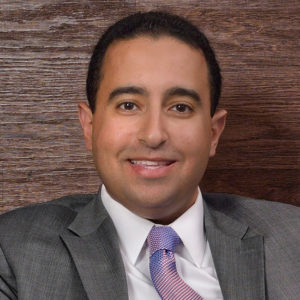 Dr. Mo Abuali is the CEO and Managing Partner at IoTco, the internet of things company. He is a strategic and transformative technology and business management leader with 20-year record of achievement driving and sustaining change in Manufacturing. Mo serves Industrial and Manufacturing Clients in Automotive, Aerospace & Defense, and others, providing Digital Transformation, Industrial IoT (IIoT), and Predictive Analytics technology and services, as well as the IoT Academy for Industry 4.0 Training. Mo has a doctorate degree in Industrial Engineering and has worked with companies like IBM, P&G, Omron, and Toyota.
Dr. Mo Abuali is the CEO and Managing Partner at IoTco, the internet of things company. He is a strategic and transformative technology and business management leader with 20-year record of achievement driving and sustaining change in Manufacturing. Mo serves Industrial and Manufacturing Clients in Automotive, Aerospace & Defense, and others, providing Digital Transformation, Industrial IoT (IIoT), and Predictive Analytics technology and services, as well as the IoT Academy for Industry 4.0 Training. Mo has a doctorate degree in Industrial Engineering and has worked with companies like IBM, P&G, Omron, and Toyota.
Title: Leveraging IoT for Zero-Downtime, Zero-Defect Manufacturing
Abstract: Manufacturing firms are embracing Digital Transformation and leveraging Big (Smart) Data metrics and analytics to achieve greater efficiency and productivity on its shop floor. The interactions of the physical (factory floor) and virtual (IT) worlds are the backbone of novel and intelligent production systems, founded on the principles of Lean Manufacturing. The interconnection of ‘devices and things’ with Industrial IoT (IIoT)-based technology is leading the way to a truly transparent manufacturing environment, the Smart Factory as some call it, that directly translate into bottom line business results and productivity improvements.
This presentation will:
(a) educate the audience on the principles of Digital Transformation, the Industrial Internet of Things IIoT and Industry 4.0 initiative; and
(b) reveal how manufacturers are leveraging AI-enabled Predictive Analytics solutions to track their Asset Health and Diagnostics, as well as predict the remaining useful life of equipment in real time, achieving significant productivity improvements; and
(c) present real Case Studies with ROI from manufacturing clients that shed the light on how they transformed from a “fail and fix” to a “predict and prescribe” operation, with a zero-downtime and zero-defect vision.
Brian K. Daly, Assistant Vice President AT&T Services, Inc.
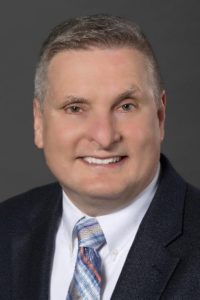 As Assistant Vice President for Standards & Industry Alliances for AT&T, Brian oversees AT&T’s strategy and leadership in global industry standards. Brian is a technology visionary and thought leader with knowledge of the global standards industry landscape/leadership. Brian has a broad technology perspective including 5 to 10-year trends, with focus on emerging technologies for 5G and beyond including public safety/mission critical services for FirstNet; earthquake early warning and wireless emergency alerts; C-V2X and UAS/UAVs; cybersecurity, NSEP, and critical infrastructure protection. Brian is engaged in programs with the DHS, DISA, and DoD, and is a leading contributor to the Alliance for Telecommunication Industry Solutions (ATIS) Board, TOPS Council and Standards Committee initiatives, resulting in the implementation of key industry standards. Brian is on the Executive Committee of the National Spectrum Consortium and holds appointments to the FCC’s Technological Advisory Council (TAC) and Communications Reliability, Security, and Interoperability Council (CSRIC). Brian also is a member of the FBI’s Infragard partnership. Brian holds Board positions on the National Public Safety Communications Council (NPSTC) and the IEEE International Standards and Technology Organization (IEEE-ISTO). Brian’s industry leadership roles include Co-chair of the Next G Alliance Steering Group, co-chair of the O-Ran Alliance Standards Development Focus Group, Chair of the GSM Association’s North American Fraud Forum and Security Group, and former co-chair of the ANSI Unmanned Aircraft Systems Standardization Collaborative Critical Infrastructure & Environment working group.
As Assistant Vice President for Standards & Industry Alliances for AT&T, Brian oversees AT&T’s strategy and leadership in global industry standards. Brian is a technology visionary and thought leader with knowledge of the global standards industry landscape/leadership. Brian has a broad technology perspective including 5 to 10-year trends, with focus on emerging technologies for 5G and beyond including public safety/mission critical services for FirstNet; earthquake early warning and wireless emergency alerts; C-V2X and UAS/UAVs; cybersecurity, NSEP, and critical infrastructure protection. Brian is engaged in programs with the DHS, DISA, and DoD, and is a leading contributor to the Alliance for Telecommunication Industry Solutions (ATIS) Board, TOPS Council and Standards Committee initiatives, resulting in the implementation of key industry standards. Brian is on the Executive Committee of the National Spectrum Consortium and holds appointments to the FCC’s Technological Advisory Council (TAC) and Communications Reliability, Security, and Interoperability Council (CSRIC). Brian also is a member of the FBI’s Infragard partnership. Brian holds Board positions on the National Public Safety Communications Council (NPSTC) and the IEEE International Standards and Technology Organization (IEEE-ISTO). Brian’s industry leadership roles include Co-chair of the Next G Alliance Steering Group, co-chair of the O-Ran Alliance Standards Development Focus Group, Chair of the GSM Association’s North American Fraud Forum and Security Group, and former co-chair of the ANSI Unmanned Aircraft Systems Standardization Collaborative Critical Infrastructure & Environment working group.
Brian received the B.S.E and M.S. degrees in electrical engineering from Arizona State University with a focus on communication systems and advanced electromagnetic engineering. Brian is the AT&T coordinator for the Department of Homeland Security SHAred RESources (SHARES) High Frequency (HF) Radio Program. Brian received the ATIS President’s Award and the ANSI Meritorious Service Award in recognition of his career creating standards across the communications spectrum including 3GPP, and the NG911 Institute Industry/Private Sector Award for his leadership in emergency communications. Brian holds over 175 issued patents in telecommunications, public safety, and cybersecurity.
Title: 5G Security, Zero Trust, and Massive IoT
Abstract: 5G will enhance security over previous generations. It will also add massive IoT – with the possibility of a million devices per square kilometer, according to the ITU vision. Many of these devices will control our everyday tasks; many will be mission critical. This talk will explore the 5G security enhancements that will support these mIoT devices, as well as look at why a “ zero-trust” view may be needed.
Ashutosh Dutta, Co-Chair IEEE Future Network Initiative, and 5G Chief Strategist, Johns Hopkins University/Applied Physics Lab, Laurel, MD USA
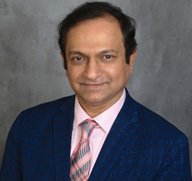 Ashutosh Dutta is currently Senior Scientist and 5G Chief Strategist at Johns Hopkins University Applied Physics Labs (JHU/APL), USA. He also serves as Chair for Electrical and Computer Engineering for Engineering Professional Program at JHU. His career, spanning more than 30 years, includes Director of Technology Security and Lead Member of Technical Staff at AT&T, CTO of Wireless at a Cybersecurity company NIKSUN, Inc., Senior Scientist in Telcordia Research, Director of Central Research Facility at Columbia University, adjunct faculty at NJIT, and Computer Engineer with TATA Motors. Ashutosh is author of more than 100 technical papers and 31 issued patents. Ashutosh is co-author of the book, titled, “Mobility Protocols and Handover Optimization: Design, Evaluation and Application” published by IEEE and John & Wiley. As a Technical Leader in 5G and security, Ashutosh has been serving as the founding Co-Chair for the IEEE Future Networks Initiative that focuses on 5G standardization, education, publications, testbed, and roadmap activities. Ashutosh is IEEE Communications Society’s Distinguished Lecturer for 2017-2020 and as an ACM Distinguished Speaker (2020-2022). Ashutosh served as the Director of Industry Outreach for IEEE Communications Society from 2014-2019. He was recipient of the prestigious 2009 IEEE MGA Leadership award and 2010 IEEE-USA professional leadership award. Ashutosh currently serves as Member-At-Large for IEEE Communications Society for 2020-2022. Ashutosh is a Distinguished Alumnus and obtained BS in Electrical Engineering from NIT Rourkela; MS in Computer Science from NJIT; and Ph.D. in Electrical Engineering from Columbia University, New York under the supervision of Prof. Henning Schulzrinne. Ashutosh is a Fellow of IEEE and senior member of ACM.
Ashutosh Dutta is currently Senior Scientist and 5G Chief Strategist at Johns Hopkins University Applied Physics Labs (JHU/APL), USA. He also serves as Chair for Electrical and Computer Engineering for Engineering Professional Program at JHU. His career, spanning more than 30 years, includes Director of Technology Security and Lead Member of Technical Staff at AT&T, CTO of Wireless at a Cybersecurity company NIKSUN, Inc., Senior Scientist in Telcordia Research, Director of Central Research Facility at Columbia University, adjunct faculty at NJIT, and Computer Engineer with TATA Motors. Ashutosh is author of more than 100 technical papers and 31 issued patents. Ashutosh is co-author of the book, titled, “Mobility Protocols and Handover Optimization: Design, Evaluation and Application” published by IEEE and John & Wiley. As a Technical Leader in 5G and security, Ashutosh has been serving as the founding Co-Chair for the IEEE Future Networks Initiative that focuses on 5G standardization, education, publications, testbed, and roadmap activities. Ashutosh is IEEE Communications Society’s Distinguished Lecturer for 2017-2020 and as an ACM Distinguished Speaker (2020-2022). Ashutosh served as the Director of Industry Outreach for IEEE Communications Society from 2014-2019. He was recipient of the prestigious 2009 IEEE MGA Leadership award and 2010 IEEE-USA professional leadership award. Ashutosh currently serves as Member-At-Large for IEEE Communications Society for 2020-2022. Ashutosh is a Distinguished Alumnus and obtained BS in Electrical Engineering from NIT Rourkela; MS in Computer Science from NJIT; and Ph.D. in Electrical Engineering from Columbia University, New York under the supervision of Prof. Henning Schulzrinne. Ashutosh is a Fellow of IEEE and senior member of ACM.
Sujata Tibrewala, OneAPI Community Manager, Intel Corp., Santa Clara, CA USA
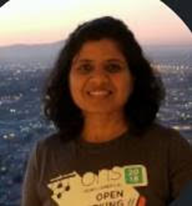 Sujata Tibrewala is an Intel community development manager and technology evangelist who defines programs to enable ecosystem developers to drive AI/ML. With OneAPI being the latest program, she has taken the responsibility of evangelizing. She is a co-chair for IEEE Edge Automation Platform Roadmap, for Beyond 5G Technology Roadmap. Under her leadership Intel Network Developer Evangelism program was nominated for Network Transformation Awards 2018 and received Edison award and Network Developer Dynamo award at Intel. She is a frequent presenter at various IEEE and industry conferences in SDN/NFV and has held positions of Director at Silicon Valley Engineering Council and TSC chair for Documentation Sub-committee Akraino. She has a master’s from IISc Bangalore and bachelor’s from IIT Kharagpur and has completed an Executive Women Leadership Program from Stanford.
Sujata Tibrewala is an Intel community development manager and technology evangelist who defines programs to enable ecosystem developers to drive AI/ML. With OneAPI being the latest program, she has taken the responsibility of evangelizing. She is a co-chair for IEEE Edge Automation Platform Roadmap, for Beyond 5G Technology Roadmap. Under her leadership Intel Network Developer Evangelism program was nominated for Network Transformation Awards 2018 and received Edison award and Network Developer Dynamo award at Intel. She is a frequent presenter at various IEEE and industry conferences in SDN/NFV and has held positions of Director at Silicon Valley Engineering Council and TSC chair for Documentation Sub-committee Akraino. She has a master’s from IISc Bangalore and bachelor’s from IIT Kharagpur and has completed an Executive Women Leadership Program from Stanford.
Prakash Ramchandran, Co-Founder Emerging Open Tech Foundation, Santa Clara, CA USA
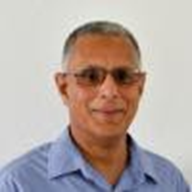
Prakash leads several start-ups and grew every one of them to a critical mass before exiting for market, benefits or merging them to aligned partners/entities. He has experience in emerging Technology in Information System(IS), Internet, Edge, Cloud, IoT & WiFi-to-5G Communications, SME in Telecom, Finance, Healthcare, Education Technology & Project Management, research Current on most Clouds, IDE, System and App Tools. His Specialties include Technology and Enterprise management specialist with strong Product, Strategy, Management, SDLC, Internet, Media Communications, Servers/Network appliances & computer/electronics hardware digital/analogue automation and AIMLDL knowhow.
Title: “INGR Edge Services Working Group – Scalable AI for Edge Computing”
Francesco Carobolante, Technology Executive Principal at IoTissimo, Reno, NV USA
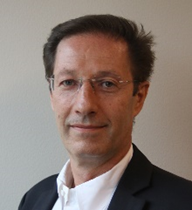
Francesco Carobolante is a Sr. Member of the IEEE, Co-chair of the IEEE INGR Energy Efficiency Working Group, Member of the Steering and Technical Committees for several IEEE PELS and PSMA initiatives, and is Principal at IoTissimo, where he helps global organizations and young companies develop technology and business strategies to compete in today’s fast-changing high-tech world. His 10-years’ experience as Vice President Engineering at Qualcomm, combined with many years in senior leadership roles for major technology firms and start-ups, enabled him to develop leading edge products for Mobile, Computing, Audio and Communication. He created many industry “firsts”; among which the Magnetic Resonance Wireless Power Transfer that received Best of Innovation Award Honoree at 2015 Consumer Electronic Show. He authored over 90 US patents and has been invited keynote speaker and expert panelist at several premier international conferences. He received Master of Science in Electrical Engineering (MSEE) degrees from both University of Padova, Italy and University of California, Los Angeles.
Title: “INGR Energy Efficiency Working Group – Energy Efficiency: The Key to Success for 5G and Beyond”
David Witkowski, Co-chair, IEEE FNI Deployment WG and Oku Solutions LLC, Aptos, CA USA
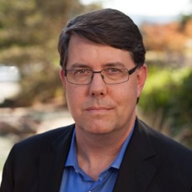
David Witkowski is an author, advisor, and strategist who works at the intersection between local government and the telecommunication industry. He is a Fellow in the Radio Club of America, an IEEE Senior Member, the Founder & CEO of Oku Solutions LLC, and is the Executive Director of the Wireless Communications Initiative at Joint Venture Silicon Valley. After serving in the U.S. Coast Guard and earning his B.Sc. in Electrical Engineering from the University of California, he held leadership roles for companies ranging from Fortune 500 multi-nationals to early-stage startups. He serves as Co-Chair of the Deployment Working Group at IEEE Future Networks, Co-Chair of the GCTC Wireless SuperCluster at NIST, as a member of the Connected Communities Forum in the Wireless Broadband Alliance, and as an Expert Advisor to the California Emerging Technology Fund.
Title: “INGR Deployment Working Group – Municipal Permitting of 5G: Where the Rubber Meets the Road”
Maha Achour, Founder, CEO & CTO, Metawave Corporation, Encinitas, CA USA
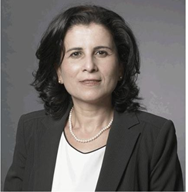
Dr. Maha Achour is the Co-Founder and CEO of Metawave Corporation. Maha is a senior leader with more than 25 years’ experience in both public and entrepreneurial start-up companies in the RF, wireless, optics and networking industries. She has a demonstrated track record of developing an idea from basic concept to product, delivering industry leading technologies, building teams and companies. Her strong technology background combined with leadership, business and marketing skills enabled her to tackle challenging problems across multiple industries. Previously, Maha served as co-founder and CTO of Rayspan, where she commercialized the first Metamaterial antennas and RF front-end subsystems for the cell-phone and WLAN industries. She has also pioneered the first broadcast HDTV system over satellite, mm-wave/Free-Space Optical systems for last mile connectivity, and led various DARPA projects in wireless MIMO and Optical devices. Dr. Achour holds a doctorate degree in Physics from Massachusetts Institute of Technology (MIT), and she completed the Master Degree Program in Wireless Communication Theory and Systems, at University of California San Diego (UCSD). She has authored over 30 publications in electrical engineering and physics and holds more than 75 granted patents and over 150 pending applications.
Title: Advancing Mobility & Boosting Connectivity in 5G Edge Compute Applications
Abstract: If 2G was about voice services, 3G about Data, 4G about Apps, then 5G will be about low-latency and high-capacity edge services especially in the era of autonomous, telehealth, and remote training. Metawave is developing advanced automotive and aerial imaging radar technology that enables unmatched range and point-cloud resolution in all weather conditions, fulfilling the needs of today’s missing ADAS sensor to meet safety requirements and consumers’ expectations. In 5G, Metawave is commercializing the only passive 5G reflector on the market and demonstrated the best active repeater to extend network coverage and enhance network speed with near zero delay at the lowest cost possible. The beamforming solutions for 5G communications include high-performance passive KLONE reflectors and active TURBO analog repeaters.
Doug Kirkpatrick, CEO at Eridan Communications, Santa Clara, CA USA
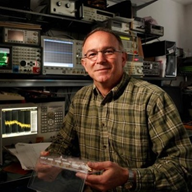 Dr. Kirkpatrick is the co-founder and CEO of Eridan Communications, Inc., a Santa Clara based company developing transceiver products for the next generations of wireless communications — 5G and beyond. Dr. Kirkpatrick is also a founding General Partner of InnerProduct Partners (IPP), a San Francisco based early stage VC firm, and the acting CEO of a very early stage startup in rare-earth- free permanent magnets based in Cleveland. Before InnerProduct Partners, from 2010-2013 he was a partner at Vantage Point Capital Partners, a large multi- stage VC firm, also based in the San Francisco Bay area.
Dr. Kirkpatrick is the co-founder and CEO of Eridan Communications, Inc., a Santa Clara based company developing transceiver products for the next generations of wireless communications — 5G and beyond. Dr. Kirkpatrick is also a founding General Partner of InnerProduct Partners (IPP), a San Francisco based early stage VC firm, and the acting CEO of a very early stage startup in rare-earth- free permanent magnets based in Cleveland. Before InnerProduct Partners, from 2010-2013 he was a partner at Vantage Point Capital Partners, a large multi- stage VC firm, also based in the San Francisco Bay area.
Prior to Vantage Point Capital Partners, from 2002–2010, Dr. Kirkpatrick was a Program Manager and Chief Scientist at the Defense Advanced Research Projects Agency (DARPA). While he was at DARPA, he started and managed programs that, among other things, developed and deployed the first LED flashlights, started, and validated the DOD path to bio renewable jet fuel, developed and demonstrated ultra-high efficiency solar cells, developed, and demonstrated full 3d dynamic holographic displays, and developed and demonstrated portable tools for the rapid de-novo synthesis of DNA up to 10,000 base pairs long. In addition to his DARPA role, he was simultaneously the Senior Technologist for Technology Productization for the Undersecretary for Acquisition, Technology, and Logistics in the Department of Defense. Prior to his tour at DARPA, he was the VP for R&D at Fusion Lighting, a lighting technology startup in the greater Washington DC area, and before that a VP and Division Manager for Science Applications International Corporation, also in the greater Washington DC area.
Dr. Kirkpatrick is a Fellow of the American Physics Society, a Member of the IEEE, and a Member of the Materials Research Society. Dr. Kirkpatrick holds a BS degree in Physics and Mathematics (1980) from the College of William and Mary and a Ph.D. in Physics from M.I.T. (1988).
Title: Improving Power and Spectrum Efficiency in the RAN
Abstract: From smart grids to sustainable logistics, 5G is a critical enabler of new technologies, but it has its own sustainability and cost problem that needs to be addressed before widespread rollout can happen. The Radio Access Network currently consumes 2.3% of global electricity production, and 5G threatens to increase that energy bill by as much as 9x. Meanwhile, the GSMA predicts that 2 GHz of new mobile FR1 spectrum will be required to meet the performance targets of 5G in many markets.
This talk will consider a variety of approaches that are needed to tame the power and spectrum requirements for 5G. A new transmitter architecture based on a switch-mode direct polar architecture takes advantage of the inherent power efficiency of switched circuits over linear circuits to reduce the power consumption of wireless infrastructure. The signal accuracy enabled by this digital architecture has further implications for both power and spectrum efficiency. Finally, network architectures that are optimized for both power efficiency and spectrum efficiency should be considered, including options for spatial spectrum reuse and even spectrum co-use.
Russell Gyurek, Director, IoT CTO Group, Cisco, Raleigh, NC USA
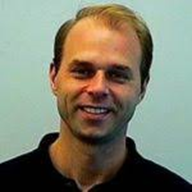 Russell Gyurek currently a Director, IoT- CTO and Industries at Cisco. He has over 25 years of networking related technology experience, the majority in leadership positions. Russ’ range of expertise includes: IoT/connectivity of things, analytics and big data, cloud, optical networking technologies, broadband architectures and related technical policy, and emerging market development. He has held various leadership roles in creating strategy and direction in these areas. In Russ’ current role he is responsible for technology leadership, market development and partner due diligence & enablement related to IoT. The CTO group evaluates future trends, emerging standards, technologies, and architectures that drive and influence Cisco’s market portfolio relating to IoT. He also works closely with the vertical solutions organization- turning strategy into real world IoT deployments, including Smart Cities. In addition, Russ is a value-of-the-infrastructure advisor to customers, helping to create new business models and use cases to leverage network data for cloud and real time event processing.
Russell Gyurek currently a Director, IoT- CTO and Industries at Cisco. He has over 25 years of networking related technology experience, the majority in leadership positions. Russ’ range of expertise includes: IoT/connectivity of things, analytics and big data, cloud, optical networking technologies, broadband architectures and related technical policy, and emerging market development. He has held various leadership roles in creating strategy and direction in these areas. In Russ’ current role he is responsible for technology leadership, market development and partner due diligence & enablement related to IoT. The CTO group evaluates future trends, emerging standards, technologies, and architectures that drive and influence Cisco’s market portfolio relating to IoT. He also works closely with the vertical solutions organization- turning strategy into real world IoT deployments, including Smart Cities. In addition, Russ is a value-of-the-infrastructure advisor to customers, helping to create new business models and use cases to leverage network data for cloud and real time event processing.
Russ engaged in numerous sponsored research work at various universities during his career at Cisco. In industry related work, he holds a board seats on the OCF (Open Connectivity Foundation), University of Washington IoT Board, and the NCSU ECE strategic advisory board. In these board roles he has collaborated with multi-stakeholders to create new programs for IoT and data science/analysis. He has given numerous keynotes at conferences and research workshops on IoT and related topics. Russ has played key roles in IEEE standards development and ratification including 802.3. Russ holds an appointed position on the FCC-TAC (Technical Advisory Council) where he has chaired Working Groups on the “sunset of the PSTN”, “network resiliency”, “IoT”, and Next Generation Internet. He is currently the working group Chairman for the FCC “Next Generation Policy and Regulations” team. Russ has led and participated on numerous technical policy teams in the past 10 years. These include the state of California, West Virginia, and the country of Lebanon. Prior to Cisco, Russ held senior technical and leadership roles at BellSouth (AT&T), in the networking part of the business. Russ has a BSEE from Trine University and an MBA from UNC’s Cameron School of Business.
Jaume Anguera, IEEE Fellow, Founder and CTO at Ignion, Associate Professor at Universitat Ramon LLull, Spain
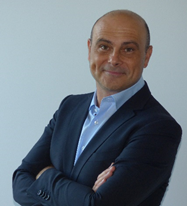 Dr. Jaume Anguera, IEEE Fellow, founder and CTO of the technology company Ignion (Barcelona, Spain). Associate Professor at Ramon LLull University and a member of the GRITS research group. He is an inventor of more than 150 granted patents, most of them licensed to telecommunication companies. Among his most outstanding contributions is that of inventor of Antenna Booster Technology, a technology that fostered the creation of Ignion. Many of these products have been adopted by the wireless industry worldwide, to allow wireless connectivity to IoT devices through a miniature component called an antenna booster that is ten times smaller than conventional antennas. Author of more than 250 scientific widely cited papers and international conferences (h-index 50). Author of 7 books. He has participated in more than 22 competitive research projects financed by the Spanish Ministry, by CDTI, CIDEM (Generalitat de Catalunya) and the European Commission for an amount exceeding € 6M being principal researcher in most of them. He has taught more than 20 antenna courses around the world (USA, China, Korea, India, UK, France, Poland, Czech Republic, Tunisia, Spain). With over 22 years of R&D experience, he has developed part of his professional experience with Fractus in South Korea in the design of miniature antennas for large Korean companies such as Samsung and LG. Since 2017 he is with Ignion with the role of CTO where he leads the R&D activity of the company creating new products, envisaging new technologies, fostering synergies with partners, and providing technology strategy to scale the business of the company. He has received several national and international awards (ex. 2004 Best Ph. D Thesis -two prizes, one given by Telefónica Mobile, 2004 IEEE New Faces of Engineering, 2014 Finalist European Patent Award). He has directed the master/doctorate thesis to more than 130 students, many of them have received awards for their thesis (COIT, COITT, Ministry of Education). His biography appears in Who’sWho in the World and Who’sWho in Science and Engineering. He is associate editor of the IEEE Open Journal on Antennas and Propagation, Electronics Letters, International Journal of Electronics and Communications, and reviewer in several IEEE and other scientific journals. He is an IEEE Antennas and Propagation Distinguished Lecturer and vice-chair of the working group “Software and Modeling” at EurAAP. More info at http://users.salleurl.edu/~jaume.anguera/
Dr. Jaume Anguera, IEEE Fellow, founder and CTO of the technology company Ignion (Barcelona, Spain). Associate Professor at Ramon LLull University and a member of the GRITS research group. He is an inventor of more than 150 granted patents, most of them licensed to telecommunication companies. Among his most outstanding contributions is that of inventor of Antenna Booster Technology, a technology that fostered the creation of Ignion. Many of these products have been adopted by the wireless industry worldwide, to allow wireless connectivity to IoT devices through a miniature component called an antenna booster that is ten times smaller than conventional antennas. Author of more than 250 scientific widely cited papers and international conferences (h-index 50). Author of 7 books. He has participated in more than 22 competitive research projects financed by the Spanish Ministry, by CDTI, CIDEM (Generalitat de Catalunya) and the European Commission for an amount exceeding € 6M being principal researcher in most of them. He has taught more than 20 antenna courses around the world (USA, China, Korea, India, UK, France, Poland, Czech Republic, Tunisia, Spain). With over 22 years of R&D experience, he has developed part of his professional experience with Fractus in South Korea in the design of miniature antennas for large Korean companies such as Samsung and LG. Since 2017 he is with Ignion with the role of CTO where he leads the R&D activity of the company creating new products, envisaging new technologies, fostering synergies with partners, and providing technology strategy to scale the business of the company. He has received several national and international awards (ex. 2004 Best Ph. D Thesis -two prizes, one given by Telefónica Mobile, 2004 IEEE New Faces of Engineering, 2014 Finalist European Patent Award). He has directed the master/doctorate thesis to more than 130 students, many of them have received awards for their thesis (COIT, COITT, Ministry of Education). His biography appears in Who’sWho in the World and Who’sWho in Science and Engineering. He is associate editor of the IEEE Open Journal on Antennas and Propagation, Electronics Letters, International Journal of Electronics and Communications, and reviewer in several IEEE and other scientific journals. He is an IEEE Antennas and Propagation Distinguished Lecturer and vice-chair of the working group “Software and Modeling” at EurAAP. More info at http://users.salleurl.edu/~jaume.anguera/
Title: Expand the connectivity of IoT devices embedding Virtual Antenna™
Abstract: Addressed to Antenna, Microwave, RF, Wireless, Electronics, Engineers how to design IoT devices embedding Virtual Antenna™. Virtual Antenna™ relied on antenna boosters which are off-the-shelf electrically small components that can be integrated inside any IoT device for operation at any frequency band (0.4GHz-10.6GHz) through the proper design of a matching network. The antenna booster frequency bands of operation are easily adjusted—not by modifying its geometry but through the proper matching-network design. This is a simpler, faster design approach that to design complex customized antennas. Attendants will learn on how to design wireless devices embedding antenna boosters covering from single band to multi-band applications either using passive or reconfigurable matching network-based architectures. Furthermore, a wealth of examples will be presented to illustrate applications.
Nicholas Oros, Deputy Chief of the Policy and Rules Division, Office of Engineering and Technology, the Federal Communications Commission, Washington, DC USA
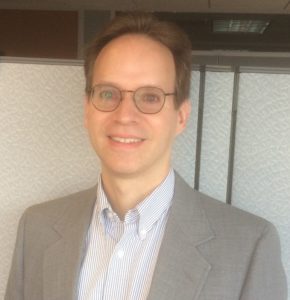 Nicholas Oros is the Deputy Chief of the Policy and Rules Division, Office of Engineering and Technology, at the Federal Communications Commission. OET is the Commission’s primary resource for engineering expertise and provides technical support to the Chairman, Commissioners, and FCC Bureaus and Offices. Since joining the Commission in 2005, Mr. Oros has been involved in various rulemaking proceedings including Spectrum Frontiers, which made mmW band spectrum available for 5G Services; Spectrum Horizons, which focuses on spectrum above 95 GHz; and the 6 GHz band proceeding that made 1200 megahertz of spectrum available for unlicensed use.
Nicholas Oros is the Deputy Chief of the Policy and Rules Division, Office of Engineering and Technology, at the Federal Communications Commission. OET is the Commission’s primary resource for engineering expertise and provides technical support to the Chairman, Commissioners, and FCC Bureaus and Offices. Since joining the Commission in 2005, Mr. Oros has been involved in various rulemaking proceedings including Spectrum Frontiers, which made mmW band spectrum available for 5G Services; Spectrum Horizons, which focuses on spectrum above 95 GHz; and the 6 GHz band proceeding that made 1200 megahertz of spectrum available for unlicensed use.
Prior to joining the Commission, Mr. Oros was an engineer at Motorola for eight years where he focused on the computer simulation of digital communication systems and radio based position determination. He is a graduate of the University of Illinois College of Law and has also earned a Master’s Degree in Electrical Engineering from Purdue University and a Bachelor’s Degree in Electrical Engineering from the University of Missouri at Rolla.
Kimberly Baum, Chief Engineer, International Bureau Satellite Division, the Federal Communications Commission, Washington, DC USA
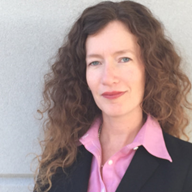 Kimberly Baum serves as the Chief Engineer in the International Bureau Satellite Division at the Federal Communications Commission. The primary mission of the Satellite Division is to serve U.S. consumers by promoting a competitive and innovative domestic and global telecommunications marketplace. She previously worked for EchoStar/Hughes in Germantown, MD as Vice President of Regulatory Affairs, where her role covered all aspects of regulatory affairs, including maintaining the spectrum rights for the company’s satellite fleet, defining, and executing spectrum strategy domestically and around the world, and acquiring new spectrum. Prior to joining EchoStar/Hughes, Ms. Baum held regulatory/spectrum positions at SES Americom, Inc., Motorola, Inc., and Astrolink International, LLC. Ms. Baum also served in the Federal Communication Commission, where she was spokesperson and lead advocate for the United States in international meetings on broadcasting satellite issues. Ms. Baum earned her Bachelor of Science and Master of Science degrees in Electrical Engineering from Virginia Tech and George Washington University, respectively.
Kimberly Baum serves as the Chief Engineer in the International Bureau Satellite Division at the Federal Communications Commission. The primary mission of the Satellite Division is to serve U.S. consumers by promoting a competitive and innovative domestic and global telecommunications marketplace. She previously worked for EchoStar/Hughes in Germantown, MD as Vice President of Regulatory Affairs, where her role covered all aspects of regulatory affairs, including maintaining the spectrum rights for the company’s satellite fleet, defining, and executing spectrum strategy domestically and around the world, and acquiring new spectrum. Prior to joining EchoStar/Hughes, Ms. Baum held regulatory/spectrum positions at SES Americom, Inc., Motorola, Inc., and Astrolink International, LLC. Ms. Baum also served in the Federal Communication Commission, where she was spokesperson and lead advocate for the United States in international meetings on broadcasting satellite issues. Ms. Baum earned her Bachelor of Science and Master of Science degrees in Electrical Engineering from Virginia Tech and George Washington University, respectively.
Talk Title:“FCC Regulatory Framework for Satellite Systems Providing IoT Connectivity.”
Abstract: Satellite systems are providing IoT connectivity today. Their broad reach makes them ideal for providing global solutions. This presentation discusses the FCC’s licensing regime for satellites that support IoT devices, as well as recent changes to its rules to facilitate “new space” operators including those providing IoT connectivity.
Martha Suarez, President, Dynamic Spectrum Alliance (DSA), Beaverton, OR USA
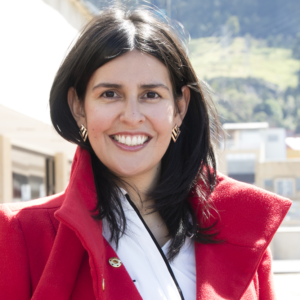 Dr Martha Suarez is President of the Dynamic Spectrum Alliance and has over 15 years of experience in the telecommunications industry. In her current role at the DSA she advocates for laws and regulations that will lead to more efficient and effective spectrum utilization, which is essential to addressing key worldwide social and economic challenges. She spent over three years as General Director of the National Spectrum Agency in Colombia, having originally joined the ANE in 2013. Before that, she was awarded with a Marie Curie Fellowship and worked at the Instytut Technologii Elektronowej ITE in Poland for the Partnership for Cognitive Radio Par4CR European Project. Suarez is an electronics engineer, with a master degree in high frequency communication systems and is Doctor in electronics from the University Paris-Est.
Dr Martha Suarez is President of the Dynamic Spectrum Alliance and has over 15 years of experience in the telecommunications industry. In her current role at the DSA she advocates for laws and regulations that will lead to more efficient and effective spectrum utilization, which is essential to addressing key worldwide social and economic challenges. She spent over three years as General Director of the National Spectrum Agency in Colombia, having originally joined the ANE in 2013. Before that, she was awarded with a Marie Curie Fellowship and worked at the Instytut Technologii Elektronowej ITE in Poland for the Partnership for Cognitive Radio Par4CR European Project. Suarez is an electronics engineer, with a master degree in high frequency communication systems and is Doctor in electronics from the University Paris-Est.
Talk Title: “Spectrum sharing, opportunities, and challenges.”
Abstract: This talk will present some existing frameworks enabling spectrum sharing and will provide an overview on how these frameworks have enabled a wider ecosystem, new business models and a more efficient use of the spectrum. The talk will refer to the first experiences with TV white spaces in VHF and UHF bands, the CBRS 3.5 GHz Citizens Broadband Radio Service (CBRS) authorized by the Federal Communications Commission (FCC) in the U.S. in January 2020, and the spectrum sharing considerations in the 6 GHz band that are crucial for Wi-Fi 6E and Wi-Fi 7 adoption. The role of Automated Frequency coordination systems will be highlighted, indicating how they can lower transaction costs, use spectrum more efficiently, speed time-to-market for new services, protect incumbents from interference with greater certainty, and generally expand the supply of wireless connectivity that is fast becoming, like electricity, a critical input for most other industries and economic activity.
Preston Marshall, Engineering Director, Google, and Chair, OnGo (CBRS) Alliance, Reston, VA USA
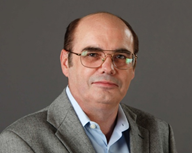 Dr. Preston F. Marshall is an Engineering Director, responsible for spectrum access technology, including a focus on the creation of a vibrant ecosystem of equipment, users, and standards in the newly shared 3.5 GHz Citizens Broadband Radio Service (CBRS) band. He is chair of the Wireless Innovation Forum Spectrum Sharing Subcommittee, developing the technology base for 3.5 GHz spectrum sharing, and Chair of the Board of the CBRS (now OnGo) Alliance, developing coexistence and neutral host technology for the 3.5 GHz band. He has a new book on this subject, “Three Tier Shared Spectrum, Shared Infrastructure, and a Path to 5G”, recently released by Cambridge University Press, as well as two prior works on Cognitive Radio.He has been heavily involved in wireless technology and policy, including: Deputy Director of the Information Sciences Institute (ISI) at the University of Southern California; and Director of its Computer Science and Technology Center; a Research Professor at USC’s Electrical Engineering Department; a contributor to the President’s Council of Advisors on Science and Technology (PCAST) spectrum study that led to the creation of the CBRS band, and a Program Manager with the Defense Advanced Research Projects Agency (DARPA), directing multiple wireless and sensing technology programs.
Dr. Preston F. Marshall is an Engineering Director, responsible for spectrum access technology, including a focus on the creation of a vibrant ecosystem of equipment, users, and standards in the newly shared 3.5 GHz Citizens Broadband Radio Service (CBRS) band. He is chair of the Wireless Innovation Forum Spectrum Sharing Subcommittee, developing the technology base for 3.5 GHz spectrum sharing, and Chair of the Board of the CBRS (now OnGo) Alliance, developing coexistence and neutral host technology for the 3.5 GHz band. He has a new book on this subject, “Three Tier Shared Spectrum, Shared Infrastructure, and a Path to 5G”, recently released by Cambridge University Press, as well as two prior works on Cognitive Radio.He has been heavily involved in wireless technology and policy, including: Deputy Director of the Information Sciences Institute (ISI) at the University of Southern California; and Director of its Computer Science and Technology Center; a Research Professor at USC’s Electrical Engineering Department; a contributor to the President’s Council of Advisors on Science and Technology (PCAST) spectrum study that led to the creation of the CBRS band, and a Program Manager with the Defense Advanced Research Projects Agency (DARPA), directing multiple wireless and sensing technology programs.
Talk Title: “Shared Spectrum as an Enabler for IIoT Applications.”
Abstract: This talk will discuss the use of shared spectrum to open opportunities for deploying IIoT networks, using a wide range of wireless and associated compute technologies. This is particularly important as move into the 5G era, with low latency and high certainly network technology becoming available. The US Citizens Broadband radio is one such opportunity, but more are likely to emerge world-wide, and technology will have to adapt to utilize them.


